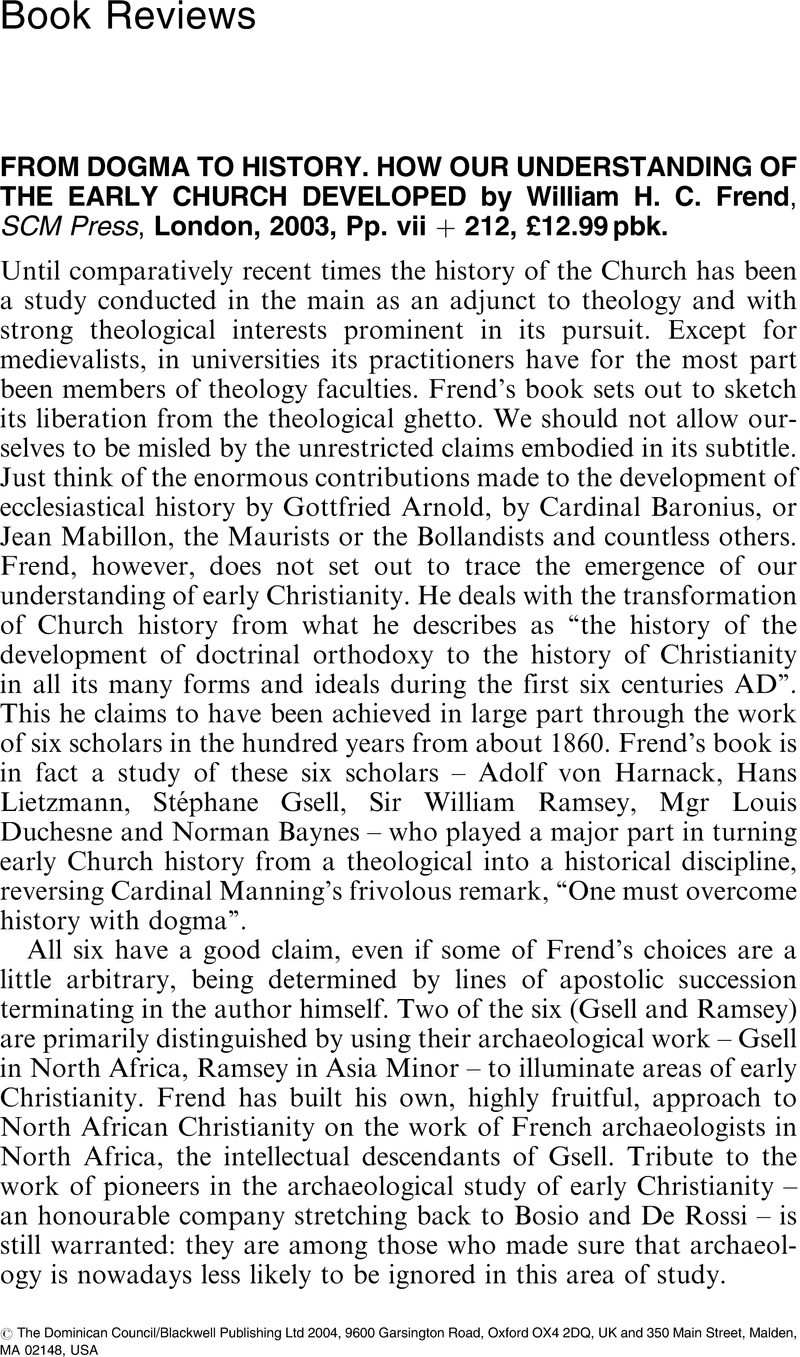No CrossRef data available.
Article contents
From Dogma to History. How Our Understanding of the Early Church Developed by William H. C. Frend, SCM Press, London, 2003, Pp. vii + 212, £12.99 pbk.
Review products
From Dogma to History. How Our Understanding of the Early Church Developed by William H. C. Frend, SCM Press, London, 2003, Pp. vii + 212, £12.99 pbk.
Published online by Cambridge University Press: 01 January 2024
Abstract
An abstract is not available for this content so a preview has been provided. Please use the Get access link above for information on how to access this content.

- Type
- Book Reviews
- Information
- Copyright
- Copyright © The Dominican Council/Blackwell Publishing Ltd 2004


